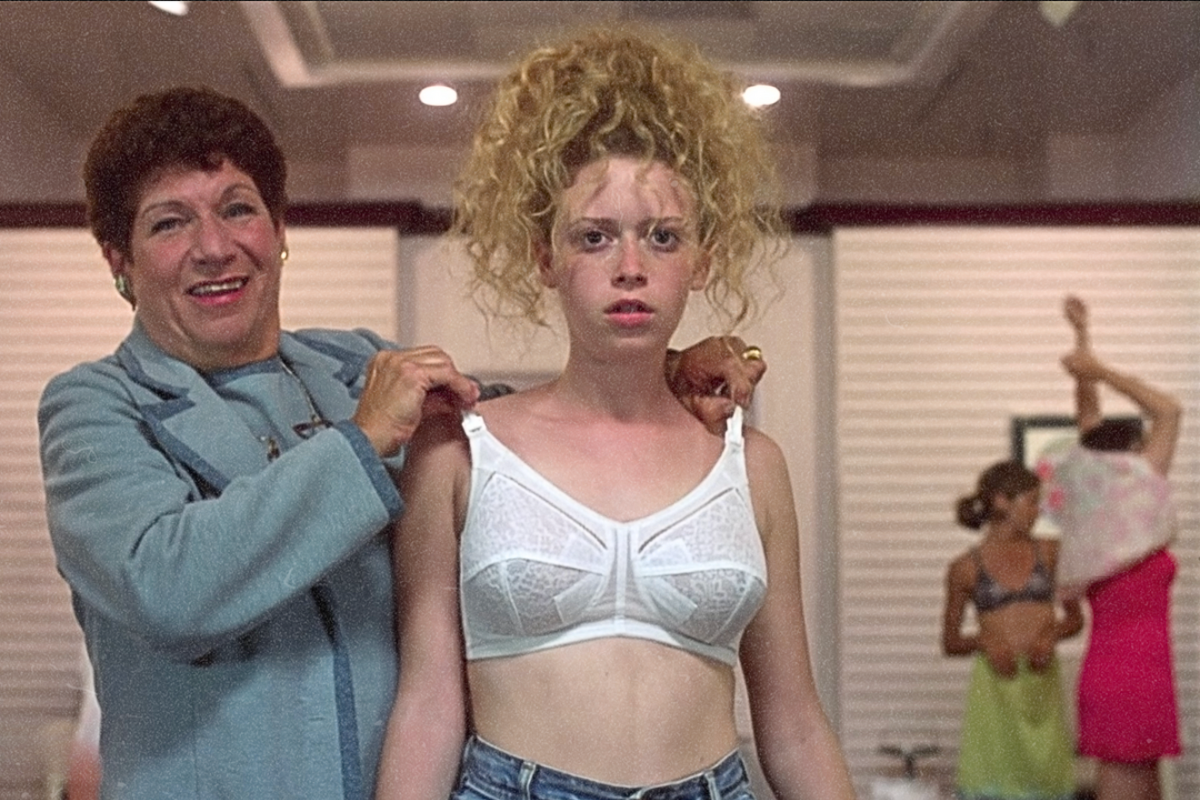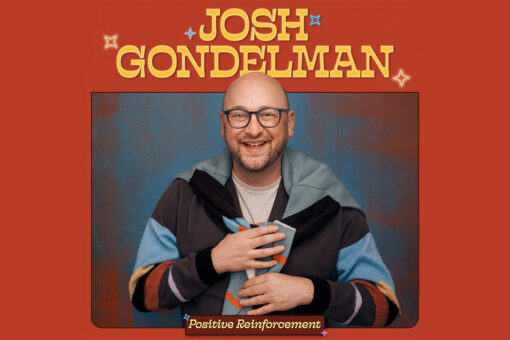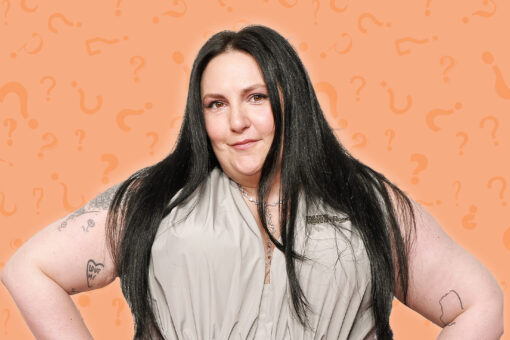In the opening scenes of “The Slums of Beverly Hills,” Vivian Abromowitz (Natasha Lyonne) is fitted for her first bra while her cousin Rita (Marisa Tomei) flashes her breasts to oncoming traffic. In these parallel moments, the film promises a story filled with all things boobs and femininity, and it certainly delivers.
When it was first released in 1998, critics applauded writer-director Tamara Jenkins for her playful coming-of-age tale. However, these late ‘90s reviewers made little mention of how Judaism and femininity intersect. Now, I think it’s important to recognize the “Slums of Beverly Hills” for what it truly is: a portrait of class-based Jewish femininity.
Set in the 1970s, the film follows the white, Jewish, lower-class Abromowitz family led by Vivian’s fearless father Murray (Alan Arkin), a divorced and struggling car salesman who lives off checks from his financially stable brother, Mickey (Carl Reiner). Murray continuously carts Vivian and her two brothers from one flimsy short-term apartment to the next, each time fleeing in the dead of night to avoid rent payments. (The family comes to identify as “nomads,” a clear nod to the long history of Jewish expulsion.) This changes, however, when Murray offers to take in Mickey’s recently rehabilitated daughter, Rita, on the stipulation that Mickey provides additional financial support.
Raised in a family of men, Vivian is newly-pubescent, slightly a tomboy and perpetually confused about why her newly acquired breasts seem to be the most important thing about her. In contrast, Rita exudes sex and has a firm grasp on how to wield traditional femininity. As Vivian navigates her new body and life, her interactions with Rita and other upper-middle-class Jewish women paint a perfect vignette of class-based Jewish femininity during a time when assimilation into White Anglo-Saxon Protestant culture was ubiquitous. Vivian lands on one end, the harsh and less desirable femininity of lower-class Jews, Rita and others on the other, a version of Jewish femininity influenced and transformed by WASP culture.
So naturally, Vivian’s shepherding into upper-middle-class femininity begins with Rita. When Rita first moves in with her cousins and Uncle Murray, Vivian discovers her naked in the bathroom. Body-confident Rita jumps from the shower and pulls an uncomfortable Vivian in for a hug. Then, she immediately applies a “mustache depilatory” to Vivian’s face, stating it’s a “Jewish girl’s secret weapon.” Until this moment Vivian seems not only unconcerned about her faint mustache but also unaware. The so-called mustache is not identifiable to her male family members, or even to viewers for that matter.
When the cousins exit the bathroom, Vivian’s father, Murray shouts, “Vivian! I didn’t know you had a mustache! See that? Already the benefits of having another female in the house.” Placed next to Vivian’s surprise about her theoretical mustache, this moment becomes a clear example of Vivian’s “harsh” femininity informed by the lower-class, more masculine environment she was raised in. Rita, though certainly not the pinnacle of all things respectable, having just come from rehab and pregnant by an emotionally unavailable wannabe actor, still possesses the knowledge of feminine respectability politics afforded to her from her upper-middle-class upbringing, which she gleefully passes along to Vivian. Here Rita uses the tools of the beauty industry — which has historically targeted women of color, Jewish women and anyone who isn’t hairless — to manipulate the “undesirable” features of her Jewishness to further assimilate into WASP norms of femininity.
With the newly found financial support, Murray moves the family into The Camelot, an upscale apartment that couldn’t be more dissimilar to the musty apartments the Abromowitzes previously inhabited. In the new building, Vivian encounters Rachel Hoffman, an upper-middle-class Jewish girl her age who recently got a nose job. In the laundry room, Rachel conveniently pulls out her plastic surgeon’s card from her pocket. Rachel shares that the surgery was to fix a deviated septum, though they “took off Daddy’s bump” while they were at it. Her surgeon, the “Michelangelo of Beverly Hills” also gave her mother a breast reduction, since her mother thinks big breasts are “cheap.”
There is a long history of Jewish women and plastic surgery. While these procedures have helped Jewish women minimize the effects of antisemitism in their daily lives, they have also become a form of assimilation into WASP beauty standards and culture. In this particular moment, when Vivian is already reckoning with the size of her breasts, Rachel’s comments both make Vivian hyper-aware of her “Jewish” nose and offer a solution. Yet again, Vivian is guided towards a more “respectable” performance of femininity.
Later, after an altercation where Murray grabs Rita’s breast, Vivian makes a beeline for Rachel’s plastic surgeon. Despite having a consultation for a breast reduction, something still holds her back. As she holds up a mirror to inspect the proposed incision the surgeon drew neatly on her chest, she looks nauseated and runs out of the office. Soon after, she confronts Rita about the night before (though in retrospect this is victim blame-y), to which Rita responds, “Sometimes a person gets so hungry that he might do something that he’s not so proud of,” clearly referring to Murray.
In this one comment it becomes clear that while Vivian has spent the film grappling with the male gaze’s impact on her life, Rita has accepted it. In response, Vivian shares about her recent visit to the plastic surgeon. She says, “I looked [at my breasts] in the mirror and I thought, that’s Mom there. And right here, in my nose, that’s Dad.” For the first time rather than seeing her body as something for others to possess or for her to change, she confidently owns it as a tapestry of her family in all their roughness, however undesirable it may be to upper-class WASP standards of beauty.
The film ends with Rita returning to her parents and Vivian and her family once again hitting the road as nomads, no longer with Mickey’s financial support. Though seemingly ending the same way it started, Vivian has navigated the uneven terrain of Jewish femininity and come out the other side. Now, she leans into the harsh, boyish traits that her lower-class brothers and father sport with pride, and away from ones that will make her more “respectable.”
Ultimately, “Slums of Beverly Hills” serves as a reminder that Jewish femininity outside of assimilation is not only possible, it’s beautiful. Twenty-five years later, this message is just as relevant as ever.
Late Take is a series on Hey Alma where we revisit Jewish pop culture of the past for no reason, other than the fact that we can’t stop thinking about it?? If you have a pitch for this column, please e-mail submissions@heyalma.com with “Late Take” in the subject line.




